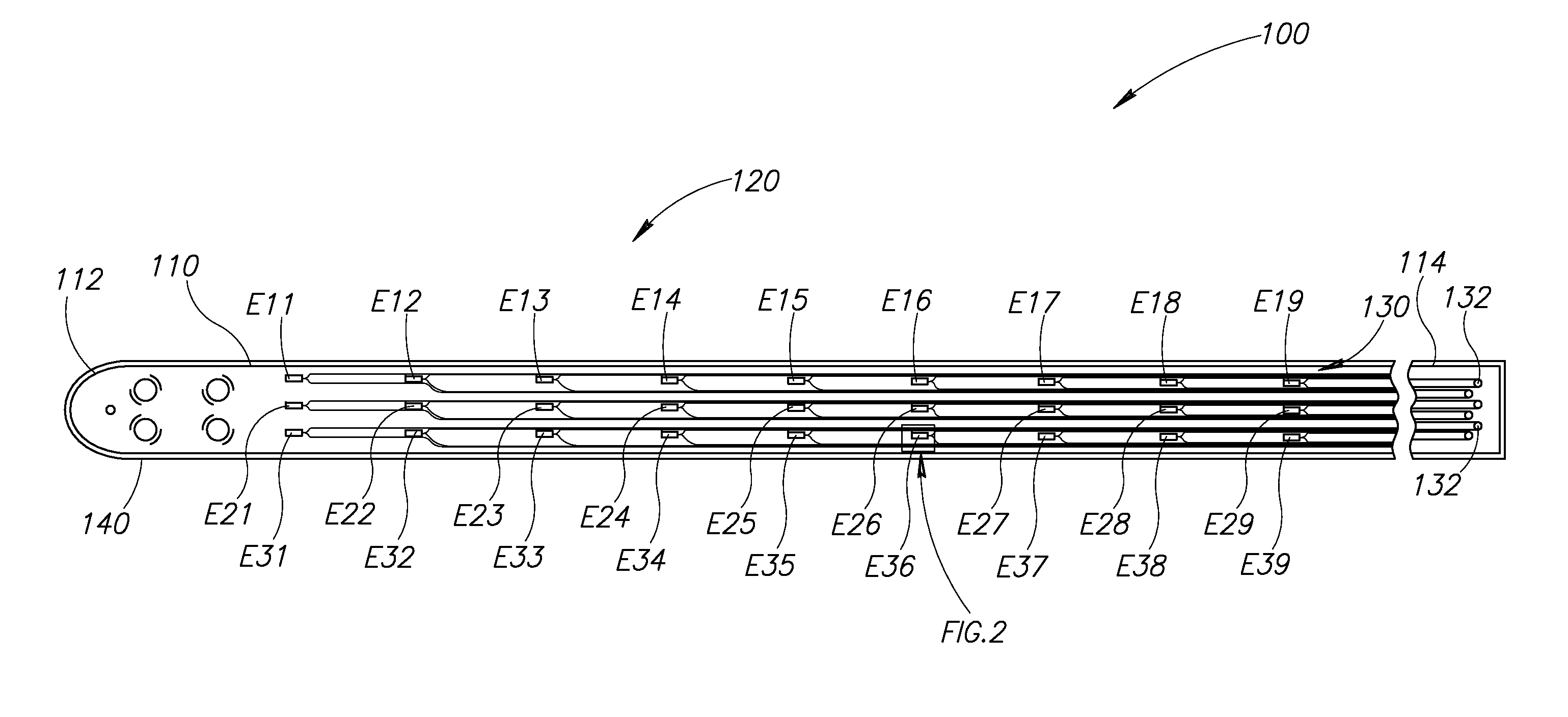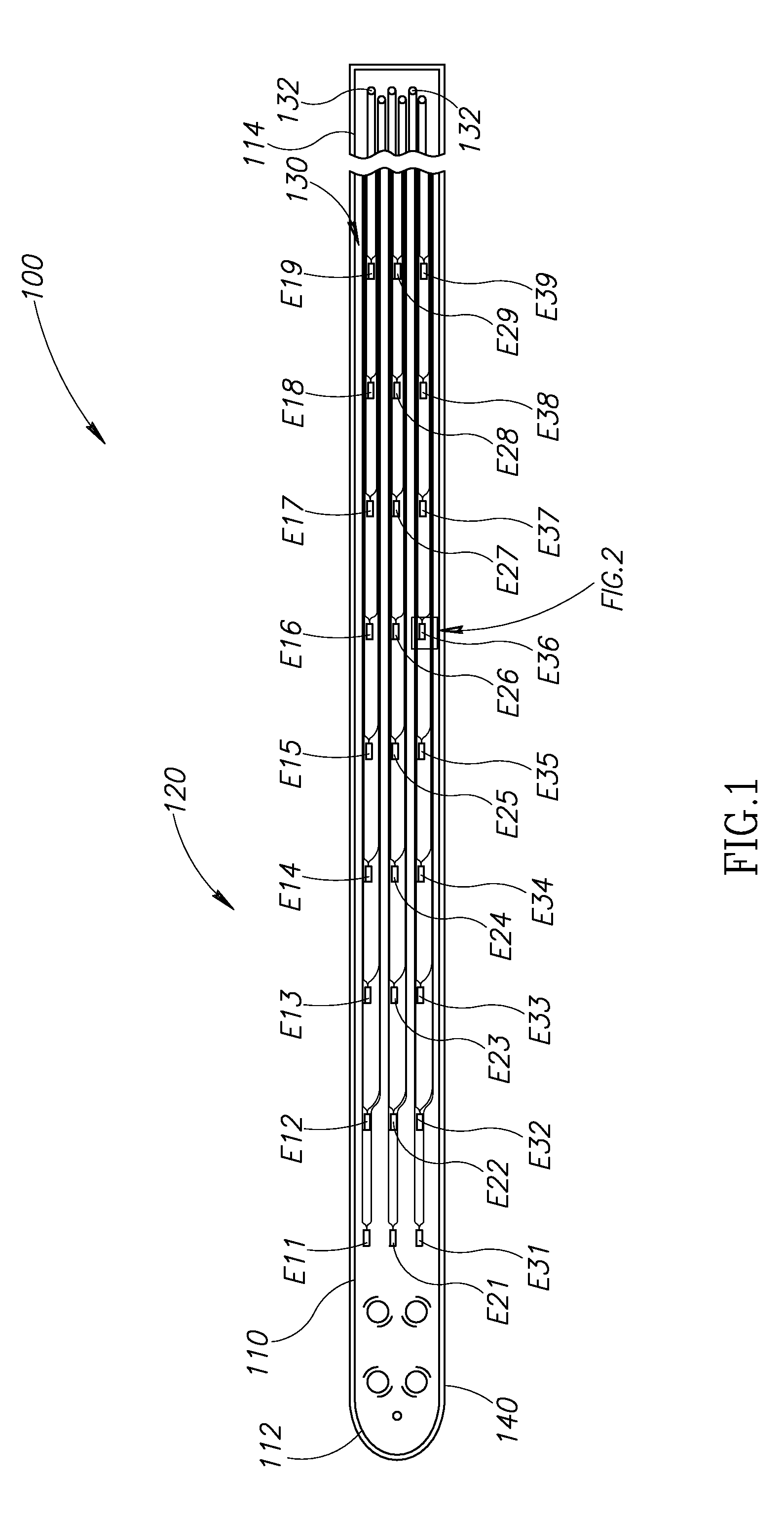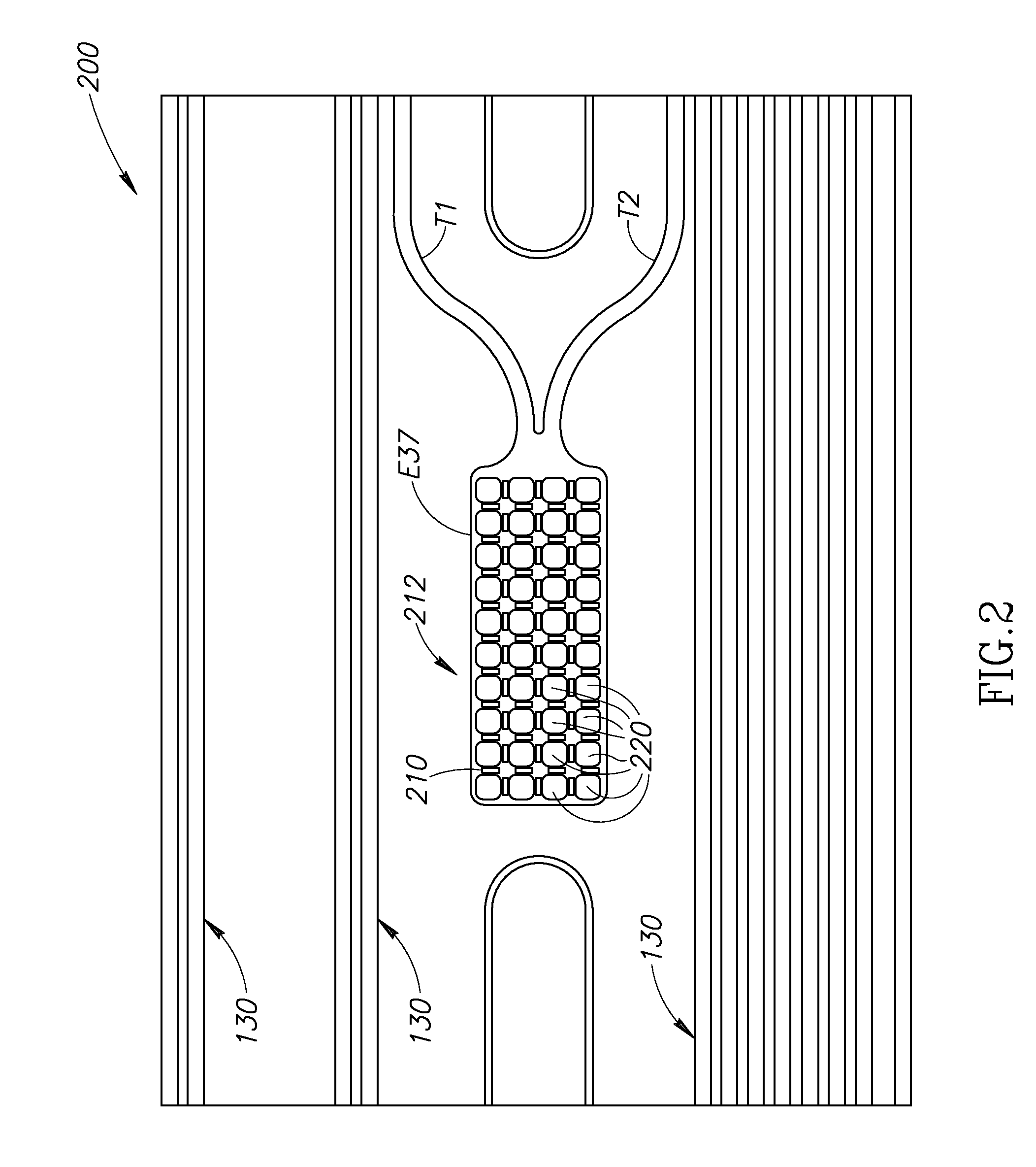Parylene-based microelectrode array implant for spinal cord stimulation
a microelectrode array and spinal cord technology, applied in the field of implantable electrode arrays, can solve the problem that none of these designs has been successfully implanted chronically
- Summary
- Abstract
- Description
- Claims
- Application Information
AI Technical Summary
Benefits of technology
Problems solved by technology
Method used
Image
Examples
Embodiment Construction
[0032]FIG. 1 illustrates an implantable electrode array assembly 100. While the embodiment of the assembly 100 illustrated is configured for implantation in a rat 500 (see FIG. 5A), embodiments may be constructed for use in other subjects, such as other mammals, including humans, and such embodiments are within the scope of the present teachings. The assembly 100 is for use with a subject that has a spinal cord 330 (see FIG. 3) with at least one selected spinal circuit (not shown) and a neurologically derived paralysis in a portion of the subject's body. By way of a non-limiting example, the assembly 100 may be implanted epidurally along the spinal cord 330. The assembly 100 may be positioned at one or more of a lumbosacral region, a cervical region, and a thoracic region of the spinal cord 330.
[0033]By way of non-limiting examples, when activated, the selected spinal circuit may (a) enable voluntary movement of muscles involved in at least one of standing, stepping, reaching, grasp...
PUM
 Login to View More
Login to View More Abstract
Description
Claims
Application Information
 Login to View More
Login to View More - R&D
- Intellectual Property
- Life Sciences
- Materials
- Tech Scout
- Unparalleled Data Quality
- Higher Quality Content
- 60% Fewer Hallucinations
Browse by: Latest US Patents, China's latest patents, Technical Efficacy Thesaurus, Application Domain, Technology Topic, Popular Technical Reports.
© 2025 PatSnap. All rights reserved.Legal|Privacy policy|Modern Slavery Act Transparency Statement|Sitemap|About US| Contact US: help@patsnap.com



